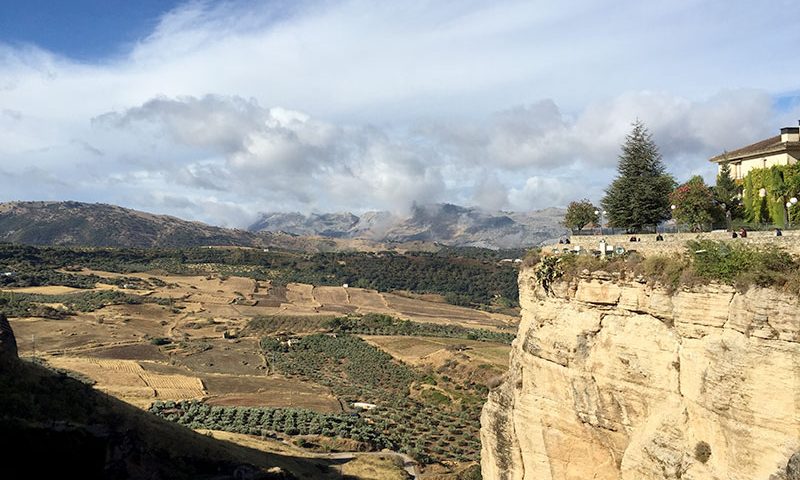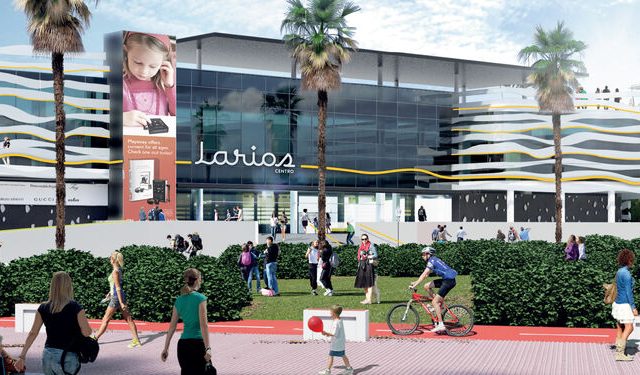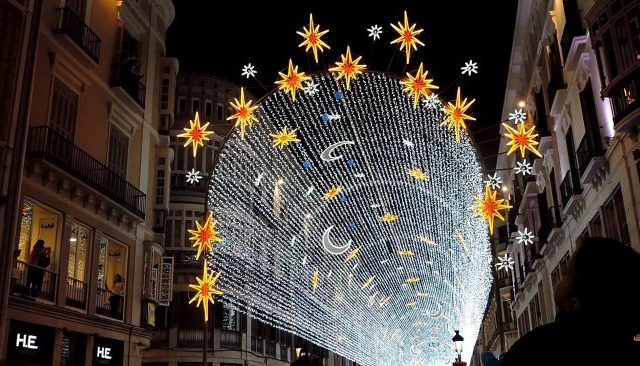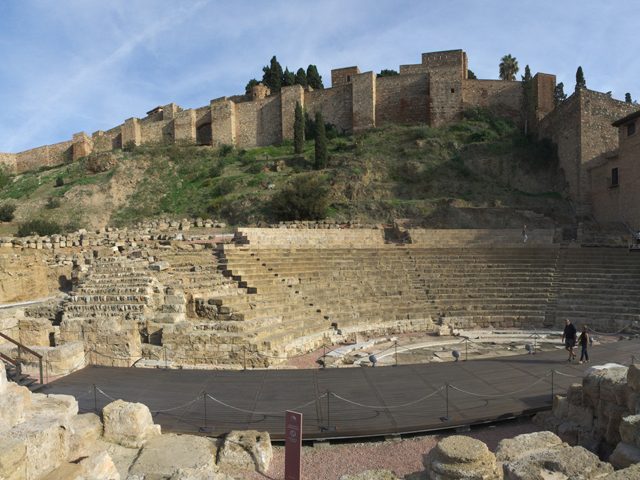- Have any questions?
- +34 951 273 575
- info@allaboutandalucia.com
River deep, mountain high in the Serrania de Ronda

Charming rural retreats in the Guadalhorce Valley
October 15, 2016
Tarif-ic Tarifa!
November 24, 2016Rob Horgan goes native in the Serrania de Ronda and discovers the backroad gems of the Genal Valley
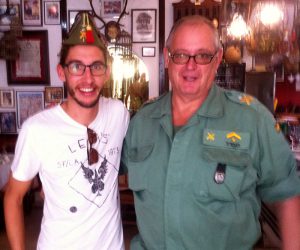 THERE are few places in the world where you can drink beer with an army general … and even fewer where the general stands all the rounds!
THERE are few places in the world where you can drink beer with an army general … and even fewer where the general stands all the rounds!
Ronda, however, is one of those places.
Celebrating a recent promotion with friends in quintessential Ronda bar El Porton, an olé away from Spain’s oldest bullring – Spanish Legionnaire Carlos Velo is eager to include me in the party.
After introducing me to the town’s signature tapa – jamon and quail eggs – Carlos regales me with tales from tours to Iraq, Afghanistan and Bosnia before explaining why Ronda is the ‘best place in the world’.
“I have been all over the world and seen many things,” he says, taking a swig from his cana and pushing his glasses back into his face. “But Ronda is the best place I have ever been to.”
Originally from Madrid, Carlos moved to Ronda some 35 years ago when he joined the Spanish Legion, which has one of its two national bases here, counting on around 800 legionnaires at present.
“The quality of life in Ronda is like nowhere else in Spain. I can live like a gentleman here, in Madrid I would just be like everyone else.
“Everything is affordable, if you like you can spend the day going from tapas bar to tapas bar and you will still have change in your pocket.
“And the scenery is breathtaking,” he adds. “The walks around Ronda are spectacular. I used to walk for hours on end around the Serrania. Nowadays I leave the walking to the youngsters.”
Visitors are drawn to Ronda for its iconic El Tajo gorge alone, a fearsome crevasse plummeting 120 metres down to the river from the Puente Nuevo bridge above.
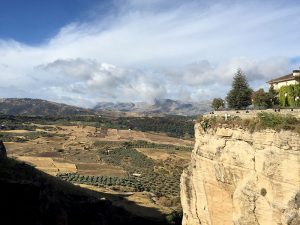 This 18th century causeway, which took 42 years to build, connects the sleepy historic Old Town to the bustling new town which is always jam-packed with scores of tourists skipping between bars, restaurants and top retailers such as Friking and Zara.
This 18th century causeway, which took 42 years to build, connects the sleepy historic Old Town to the bustling new town which is always jam-packed with scores of tourists skipping between bars, restaurants and top retailers such as Friking and Zara.
Once described as a ‘cono moment’ by celebrity chef Jean Christophe, the gorge has had more pairs of eyes on it this year than ever before after a bumper tourist season.
“Summer no longer lasts for July and August, this year the summer season has been going since April and it is still going now,” he says. “Compared to last year we are up 11% and that goes for all the hotels and restaurants here. Ronda is booming.”
It’s the same story at the stunning Al Lago hotel and restaurant in nearby Zahara de la Sierra where owner Stef tells me that he has been overrun with bookings this year.
Rightly named one of the top outdoor terraces by Dining Secrets of Andalucia, Al Lago is still bustling with guests in October as the rush to Ronda spills out beyond its historic centre.
But it is not just the hospitality industry that is happy to see the influx of tourists, as British expats Elaine and Malcolm Moore tell me.
“Ronda is one of these places where everyone is welcome,” says Londoner Elaine.
“We moved here 16 years ago after nearly 20 years on the coast and we have loved every day.
“In fact, we wish we had moved here sooner.”
She adds: “It is great to see so many people here at the moment. It has given the bars a new lease of life.
“We go out to live music events three or four nights a week, the town is absolutely buzzing.”
But despite the tourist invasion, Ronda retains the charm that enticed the likes of Ernest Hemingway and Orson Welles and inspired a whole library of literary figures, including James Joyce and German poet Rainer Maria Rilke.
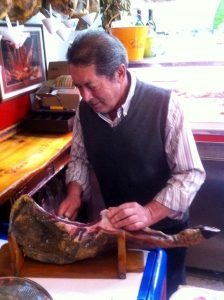
Ronda ham cutter expertly slices his jamon
More recently, US first lady Michelle Obama and ex-Prime Minister David Cameron have toured Ronda’s sights.
Even Bill Gates came on a secret visit two years ago and Madonna infamously shot her music video, Take a Bow, in the bullring on a windy, wet November day in 1994.
The plaza de toros is on everyone’s agenda – a distinguished classical building that was home to Spain’s first corrida some 231 years ago.
Outside, a statue of local lad Pedro Romero (born 1754) stands in welcome.
Dubbed the ‘father of the corrida’ for introducing bullfighting on foot and the matador’s balletic style, he killed over 5,000 bulls and passed his skills down the line. The Romero family has provided Spain with over three generations of bullfighters.
September’s annual Goyesca bullfight in 18th century costume pays tribute to Romero and Goya’s matador paintings and is famous the world over. During the festival the bullfighters are led out into the street on the shoulders of their cuadrillas (assistants).
The bullring and its museum showcasing etchings by Goya is one of Ronda’s top 30 sights. The cathedral-sized 15th century Santa Maria church is another, and you’ll never tire of wandering Ronda’s sepia-toned cobbled streets to discover them.
And when you’ve ticked those boxes, there are three natural parks to explore. Ronda is encircled by the Sierra de las Nieves, the Sierra de Grazalema and the Alcornocales, where you can indulge in rugged outdoor pursuits like hiking, horse riding or a 4×4 romp.
The A-397 up from San Pedro is the quickest route to the City of Dreams, as writer Rilke once christened Ronda. It snakes through rugged ‘cowboy country’ to the vertiginous mountain town which pierces the clouds at 750 metres above sea level – giddy limits that have been an inspiration to so many.
En route, a trip to Juzcar – the white village that was famously painted blue for The Smurfs movie – is well worth a visit.
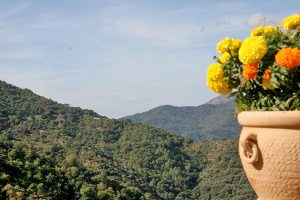
Genal Valley
But to truly appreciate the Serrania de Ronda, a trip up the old road through the Genal Valley is well worth the extra time for the views, as Harley Davidson owners will testify. This is their favourite mountain track for a burn up so keep an eye on those rear-view mirrors.
Every curve and bend reveals another cluster of white-washed houses stacked on top of each other like Lego cubes. Surrounded by verdant green oak trees and glimpses of bright orange cliff face, a patriotic Irishman might say the tricolour had been plastered on the side of Andalucia’s mountains.
My first stop along ‘Ronda’s backstreet’ – and everyone else’s too, as it turns out – is the mountaintop village of Jubrique. On a sunny Sunday afternoon in autumn I am joined by lycra-clad cyclists, bikers in leather and daytrippers by the coachload as I tuck into my Spanish fish and chips – gambas pil pil and patatas bravas.
Brothers Jaime and Juanmi from Algatocin tell me they have been cycling through the valley almost every weekend for 25 years.
“The valley is so beautiful,” Juanmi says. “The cycle from Ronda to the coast is for riders who appreciate the beauty of the valley.
“Traffic on the road is so quiet that it is ideal for us.”
Five minutes from Jubrique where the valley meets the Genal river, a scenic walk winding past abandoned mills is accessible from the Venta San Juan, a former Guardia Civil checkpoint during the early Franco era.
Genalguacil takes the prize for most picturesque village in the Genal. Surrounded by pines and oaks, its impressive church proudly overlooks the valley while an open air art gallery of curious sculptures and murals lining the white-washed streets reveals a pueblo that has gone completely art-mad.
During the first two weeks in August, artists get creative for the festival of Los Encuentros de Arte del Valle del Genal, and their prize-winning works of art go on permanent public display throughout the town.
The best valley views are reserved for the village of Algatocin which offers a 180 degree panorama. Closer to Ronda, the Roman Castillo de Benadalid – now a cemetery – offers a glimpse into the region’s rich past.
Let the tourists take the high road. They might be in Ronda before you but the back road will show you the real beauty of the Serrania de Ronda.

